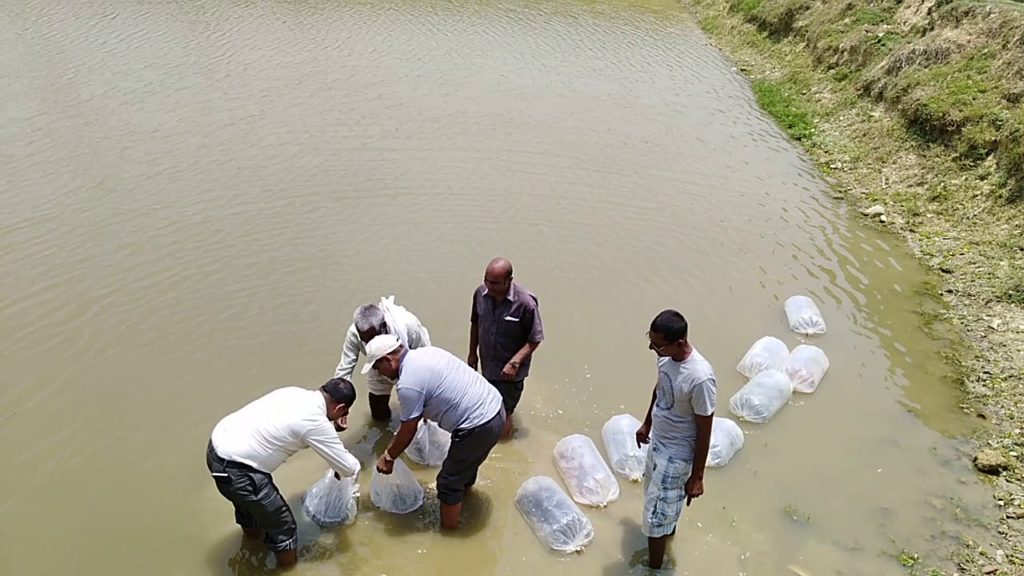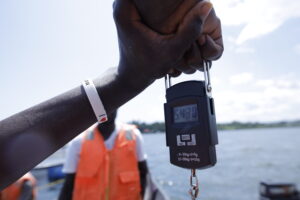Fingerling is the terminology used for a baby fish ranging from 3 grams to 6 grams. These young fish require special care and attention to ensure their survival. The following steps are required to properly stock fingerlings in your pond or cage or tank. Generally, it is recommended to stock 100-250 fingerlings per square meter of water volume. Overstocking can lead to poor water quality and disease outbreaks.

Step 1. Prepare the pond or tank
The health of fingerlings is in a large part determined by their environment. As such it is important to prepare the pond or tank. This includes the following:
– Clean and disinfect the pond or tank and surrounding area. This also involves clearing bushes and grass around the pond. It removes any bacteria or parasites that could be harmful to the fingerlings.
– Test the water quality. The water quality should be suitable for the growth of the species of fingerlings you are stocking. This includes testing the oxygen levels, temperature, and pH.
– Remove any unwanted fish or other aquatic organisms. These could compete with the fingerlings for food and resources, or they could prey on the fingerlings.
Step 2. Select good quality fingerlings
For more guidance on this read how to identify good quality fingerlings.
Step 3. Transport the fingerlings
It is crucial to transport fingerlings with care to avoid stress, injury or death. Stress can decrease the ability of fish to resist disease, making them susceptible to infections or parasites.
Fingerlings are typically transported in bags or containers filled with oxygenated clean water. When transporting fingerlings, make sure to keep them in a shaded and cool environment. It is also essential to keep an eye on the bags to make sure they don’t break or leak.
Here are some tips for transporting fingerlings:
– Use a cooler or other insulated container to transport the fingerlings. This will help to maintain a stable temperature.
– Add oxygen to the water in the container. This can be done using an air pump or by aerating the water before you add the fingerlings.
– Avoid overcrowding the container. The fingerlings should have enough space to move around.
– Monitor the fingerlings closely during transport.
Step 4. Acclimate the fingerlings
1. Acclimating the fingerlings will help to reduce stress and make them more likely to survive and thrive in their new environment. Fish can experience stress if moved rapidly, so this step must be done slowly and carefully.
2. Acclimating fish is done by floating the shipping bags or containers in the pond or tank for 30-60 minutes to allow the temperature to equalize.
3. You can then gradually add pond or tank water to the shipping bags or containers over a period of 30-60 minutes.
4. Once the water in the shipping bags or containers matches the water in the pond or tank, you can gently release the fingerlings into the pond or tank.
Step 5. Releasing fingerlings into the culture water

When stocking the fish, these are key tips to consider;
– Handle them gently to avoid injury. Allow them to gently swim from the transfer bag into the culture water after acclimatization.
– Make sure that the fingerlings are evenly distributed throughout the pond or tank so they can swim freely and have enough space to grow.
Post Stocking (Monitoring the fingerlings)
Closely and regularly monitor the behavior of your fingerlings after stocking. Check the water parameters routinely as well as the condition of the fish. Take record of water temperature, the amount of feed given including the feeding time/duration, the pH levels, and any observations made about the fish. By monitoring them, you can easily detect and address any environmental or health issues as soon as possible.





